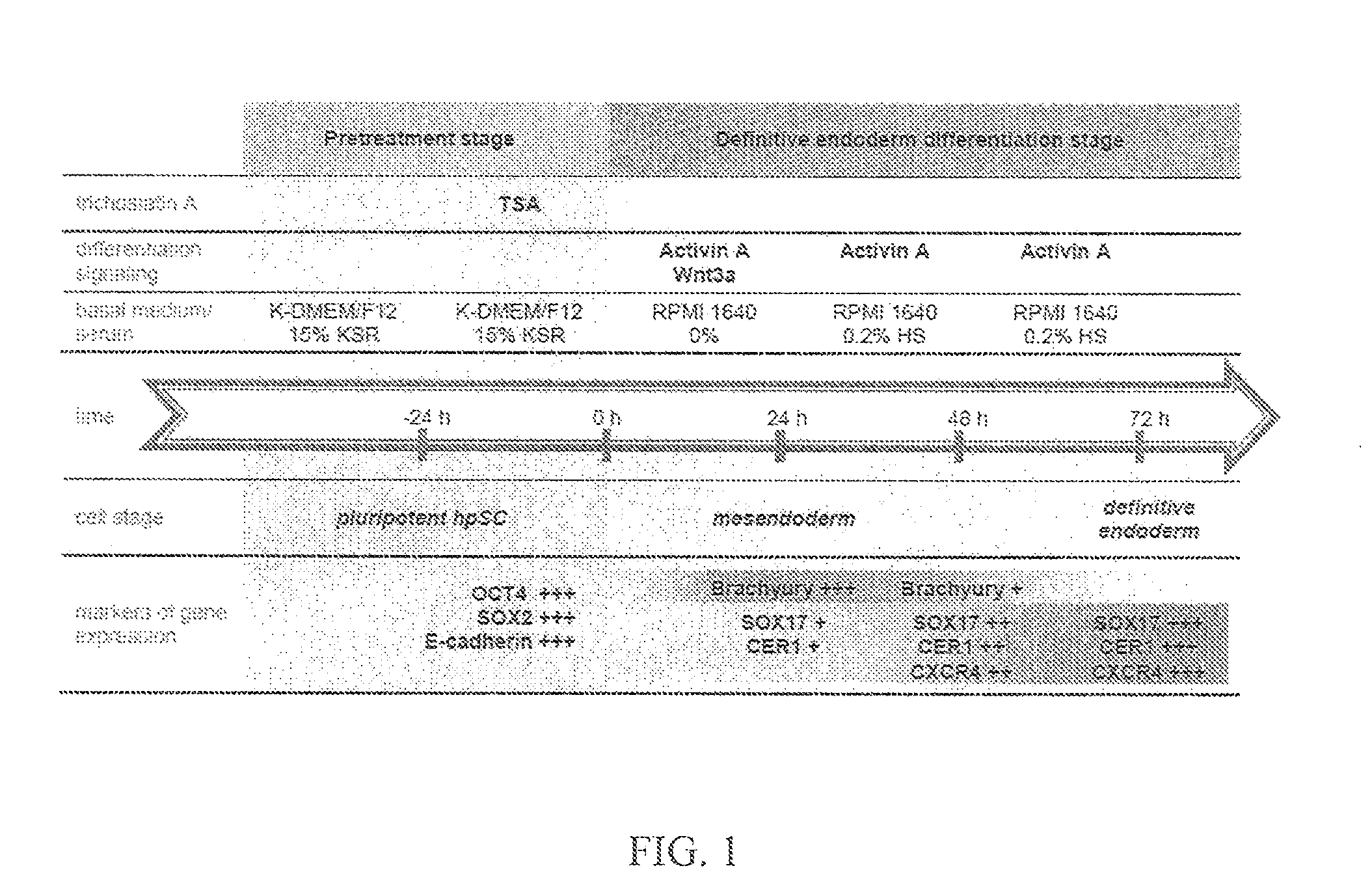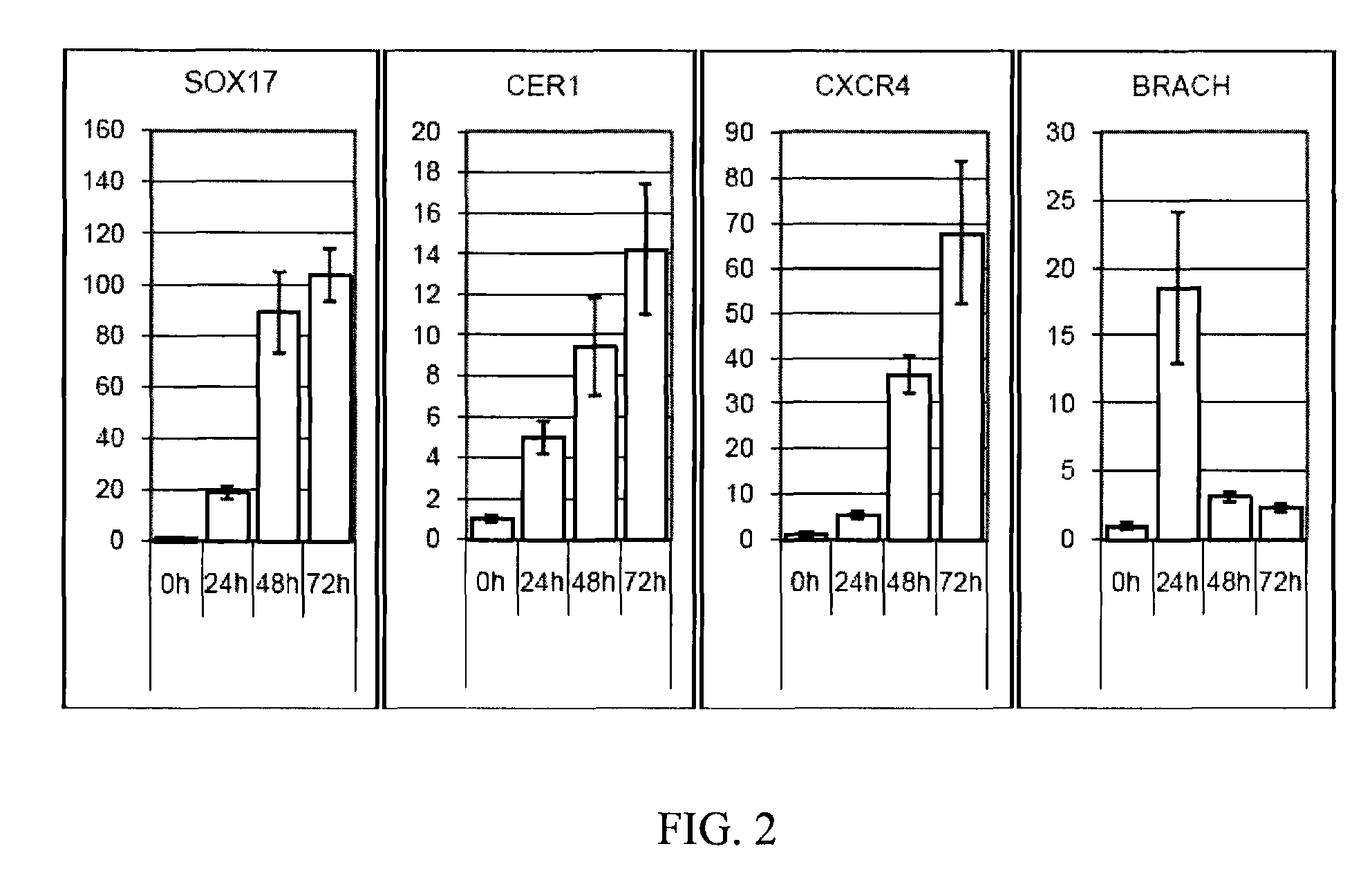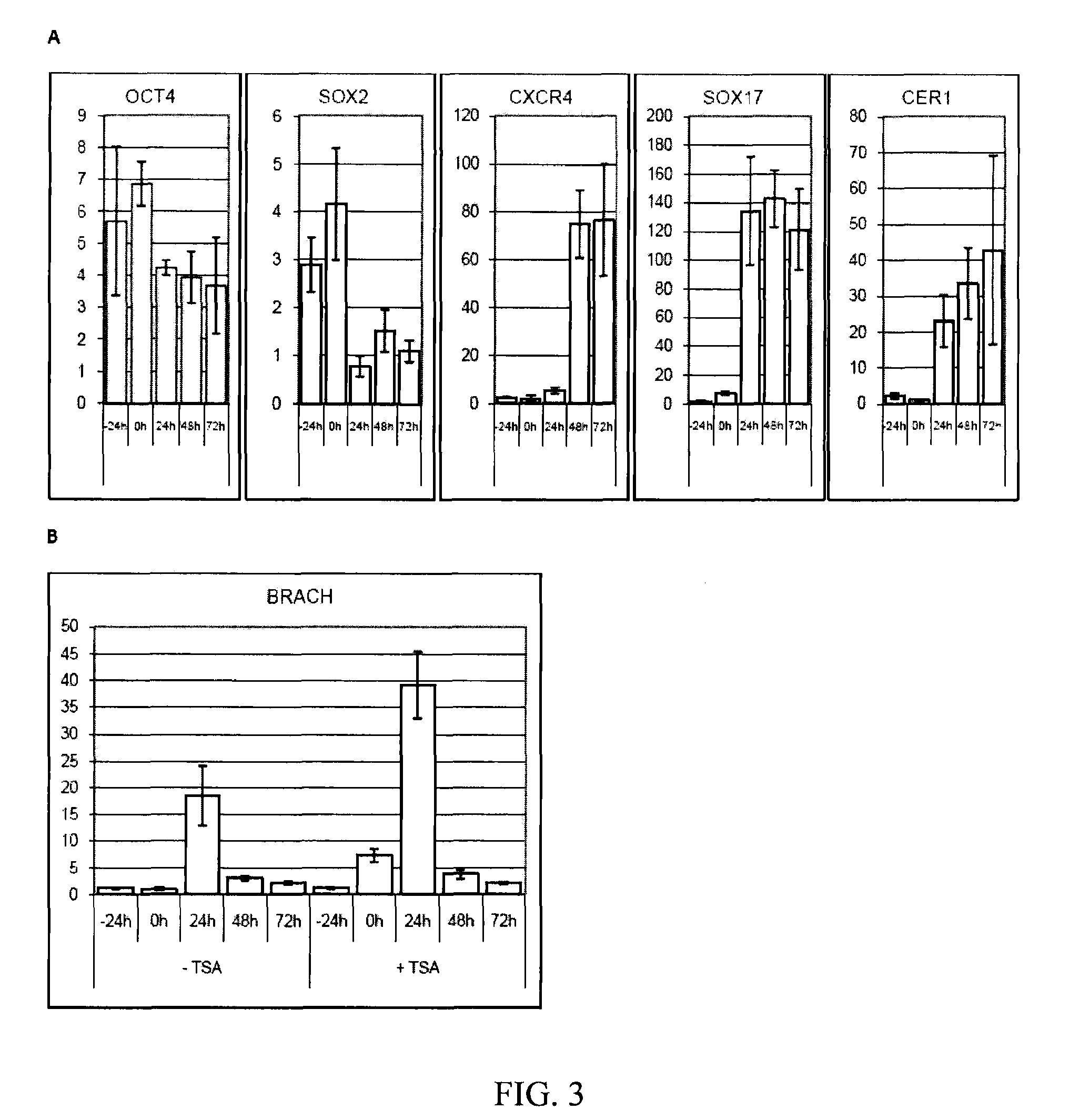Methods of deriving definitive endoderm cells from pluripotent parthenogenetic stem cells
- Summary
- Abstract
- Description
- Claims
- Application Information
AI Technical Summary
Benefits of technology
Problems solved by technology
Method used
Image
Examples
example 1
Production of Definitive Endoderm Cells
[0077]The following example demonstrates production of endoderm-like cells derived from LLC-12ph and LLC-6p parthenogenic cell lines. These endoderm-like cells were derived according a protocol of various culture media (D1-Activin A+Wnt3a; D2-Activin A; D3-Activin A; see Tables 1-4, below). However, prior to culture, the parthenogenetic cells were exposed to a pretreatment agent (trichostatin A (TSA)).
[0078]
TABLE 1phSC culture mediumKnock-out DMEM / F1215% KSR200x NEAA100x GlutaMAX ™-I1000x 2-Mercaptoethanol4 ng / mL bFGF20 ng / ml Activin A100x, Penicillin-Streptomycin stock solution
[0079]
TABLE 2Differentiation medium 1 (D1)RPMI 1640100x GlutaMAX ™-I0.5 mg / ml HSA0.1% Human serum150 ng / ml Activin A75 ng / ml Wnt3a100x, Penicillin-Streptomycin stock solution
[0080]
TABLE 3Differentiation medium 2 (D2)RPMI 1640100x GlutaMAX ™-I0.5 mg / ml HSA0.5% Human serum300 ng / ml ITS150 ng / ml Activin A100x, Penicillin-Streptomycin stock solution
[0081]
TABLE 4Differentiati...
example 2
Human Parthenogenetic Stem Cells Produce Enriched Populations of Definitive Endoderm Cells after Trichostatin a Pretreatment
[0085]The following example illustrates the directed differentiation of human parthenogenetic stem cells (hpSC) to produce enriched populations of definitive endoderm. Moreover, it was found that treatment of undifferentiated hpSC by trichostatin A (TSA) before applying the directed differentiation protocol significantly increased the proportion of definitive endoderm cells in the final population. TSA-pretreated as well as non-TSA-treated hpSC undergoing differentiation toward definitive endoderm demonstrated a similar temporal sequence of gene expression to that which occurs in the course of definitive endoderm differentiation during vertebrate gastrulation and for differentiation of hESCs to definitive endoderm. Generation of the definitive endoderm lineages from hpSC represents a critical first step toward the development of cell-based therapies for liver a...
PUM
| Property | Measurement | Unit |
|---|---|---|
| time | aaaaa | aaaaa |
| time | aaaaa | aaaaa |
| concentration | aaaaa | aaaaa |
Abstract
Description
Claims
Application Information
 Login to View More
Login to View More - R&D
- Intellectual Property
- Life Sciences
- Materials
- Tech Scout
- Unparalleled Data Quality
- Higher Quality Content
- 60% Fewer Hallucinations
Browse by: Latest US Patents, China's latest patents, Technical Efficacy Thesaurus, Application Domain, Technology Topic, Popular Technical Reports.
© 2025 PatSnap. All rights reserved.Legal|Privacy policy|Modern Slavery Act Transparency Statement|Sitemap|About US| Contact US: help@patsnap.com



